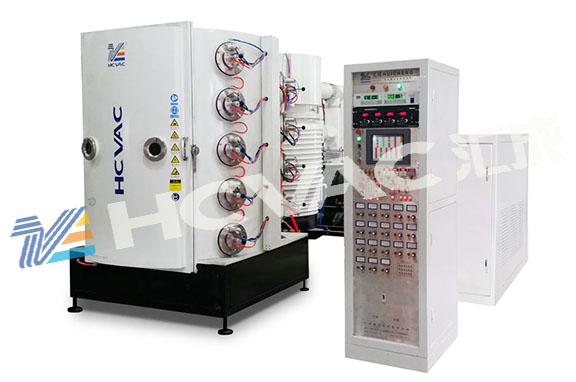There are various kinds of plastic products we use every day. Most of them are vacuum coated. Because plastic products are widely used and the demand is relatively large, many businesses will pay more attention to the plastic vacuum evaporation coating process. The following is a brief introduction to the plastic vacuum evaporation plating process of the pvd coating machine:

The vacuum evaporation coating process of the decorative film of plastic products in the pvd coating machine. Generally, the vacuum evaporation coating machine for plastic products has two types: horizontal and vertical double-chamber (mussel shape).
The process flow of the evaporation coating of the vacuum coating machine is: cleaning and degreasing - putting on the shelf - priming - curing - evaporation coating - topcoat - curing - off the shelf - dyeing - inspection.
The coating process is described in detail below.
(1) Incoming material inspection.
(2) Drying: The incoming material to be plated contains a lot of water, and needs to be dried for 3 to 5 hours at a temperature of 50 to 60 °C.
(3) Putting on the shelf: Generally, it is basically produced according to the coating requirements of the vacuum coating machine during injection molding. Therefore, the surface of the part to be plated is generally less oily and can be put on the shelf after general wiping, but decontamination treatment is required when the incoming material is oily. The method is to brush, rinse and dry one by one with commercially available detergents. When the oil stain is serious, it needs to be degreasing by soaking for 15-20min with cleaning agent at 50-60℃.
(4) Dust removal: This process is one of the keys to ensure the coating quality of the pvd coating machine. There are two methods: one is to use a vacuum cleaner to align the parts to be plated on the shelf to carefully remove the dust, which can achieve ideal results; The other is to use high-pressure air to "blow dust". This method must be equipped with an oil-water separator, but this method is not ideal in actual work; It is used when the requirements are higher.
(5) Primer coating: Primer coating is the second key to ensure the quality of the coating. The purpose of priming is to improve the surface finish and brightness of the plated parts and improve the bonding force of the film layer.
(6) Drying: After the paint is leveled, it needs to be dried and cured. The methods include infrared heating method, electric heating method and ultraviolet (UV) curing method. The curing temperature is 60~70℃, and the curing time is 1.5~2.5h.
(7) Coating: Coating is the key to ensuring the quality of the coating.
(8) Topcoat: protect the metal film layer and prepare for the coloring process.
(9) Coloring: After the topcoat is completely cured, it can be dyed. According to customer requirements, different colors are prepared according to a certain proportion. Commonly used 24K gold can be prepared with yellow powder, gold powder and red powder; black powder, green powder and blue powder can be used for the preparation of black. In order to enhance the wettability of the plated parts, 1% glacial acetic acid can be added, and the discoloration temperature should be controlled at 60-70℃, and should not exceed 80℃.
Each step of the coating process of the
pvd coating machine is a very key word, and any link is indispensable. In order to improve the quality of the film layer, each step must be strictly carried out in accordance with the requirements.



